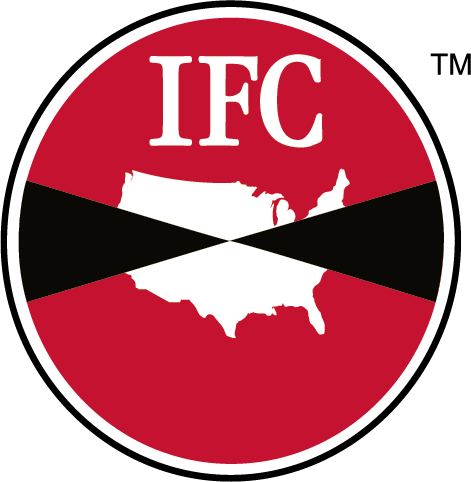FUMIGATION
IFC’s highly trained fumigation specialists are the leaders in the industry. Our fumigation teams are certified and comprehensively trained in safety and current techniques for fumigating all types of containers, ships, barges and structures containing food and non-food products.
ABOUT FUMIGATION SERVICES
Fumigations are highly specialized treatments that employ the power of gas formulations in sufficient concentration to effectively eliminate target pests. Fumigants possess “unique properties and capabilities that permit use in numerous situations where other forms of control are not feasible or practical” (FAO 1989). Individual gas molecules can penetrate into and back out of treated materials, cracks and crevices or other pest harborage areas.
All fumigants available for use in the food industry face heavy regulation to help ensure their safety – we’re prepared to bring those highly regulated and tested fumigants to other industries in addition to food processing. The Environmental Protection Agency (EPA) classifies these pesticides as Restricted Use Pesticides (RUP’s); only state certified pesticide applicators may apply fumigants. EPA product labeling contains additional requirements for use including the advanced development of a Fumigation Management Plan. Product labeling is considered the law and must be followed.
IFC PROVIDES:
GENERAL FUMIGATION
“General Fumigation” is a term used in many industries to describe treating a space for pest management. (As opposed to the term, “Structural Fumigation” used to describe treatments that target wood destroying insects found in structures.) The amount of fumigant necessary for an effective target concentration depends on the volume of space. Prior to the fumigation, the treatment site will need to be gas tight to maintain proper concentration. Gas monitoring during the treatment allows the fumigator in charge to determine if maintaining proper concentrations requires additional gas. Plans for additional advanced site preparation may be required with your IFC Representative so that the treatment is effective.
SPOT FUMIGATION
Spot fumigation is the short-term treatment of processing machinery and equipment with phosphine fumigant. To control the adult and larval life stages of insects that infest particles remaining within the equipment, spot fumigations are necessary. Interrupting the life cycles of the insect pests is the intention of spot treatments. Since one or more life stages may survive, control of insect infestations require periodic repetition of spot fumigations. When proper dosage and exposure times occur, Phosphine gas is effective against all life stages of insects. However, long exposure times and proper sealing of equipment are required to kill all life stages. An effective program to disrupt the insect life cycle uses Magtoxin on a monthly schedule. As a result, killing those life stages that survived the first treatment or insects recently introduced into the equipment.
First, identify all equipment to be treated, then inspect for significant sources of leakage. Your IFC Manager can determine what equipment is a good candidate for a spot treatment and best methods for sealing. In some instances, work orders to facility maintenance personnel may be necessary to repair equipment to improve gas retention.
RAILCARS/TRAILERS/CONTAINERS
Fumigant labeling allows for the treatment of railcars, containers, trailers or other transport vehicles. However, regulations prohibit fumigation in-transit over public roads. These type of treatment sites can be easily sealed and treated as needed. Do not schedule treatments when ambient air temperatures are low, unless you can heat the site. For example via the use of a heated reefer trailer. Fumigation of flour cars are common during the warmer months while in transit, as part of a quality assurance program. The shipper must provide advanced notice to the railcar receiver site. The receiving site must have procedures to properly receive and aerate the fumigated commodity, including a Fumigation Management Plan.
GRAIN BINS, FLAT STORAGE AND VERTICAL STORAGE SITES (SUCH AS CONCRETE BINS OR SILOS)
Direct fumigation of stored grain is another treatment option that fumigant labeling allows. In addition to proper sealing, you must carefully consider fumigant movement throughout a large grain mass. Research shows that without proper recirculation, fumigant gas will move up and down within the grain mass depending on daily temperature fluctuations, updrafts and temperature differences between the grain mass and ambient air temperature (Reed 2006). Proper gas monitoring is necessary to maintain effective concentrations throughout the entire grain mass for the required treatment time.
FUMIGATION OF SHIPS OR CONTAINERS ABOARD SHIPS
Fumigation of ship holds of grain can occur while the ship is in-transit. However, take into account special safety considerations to ensure the ship crew’s safety. The U.S. Coast Guard governs in-transit ship fumigations. They require completion of extra paperwork and inspections prior to the treatment. Fumigated containers may also be loaded onto ships to complete the fumigation treatment time while in transit. DOT RSPA require additional safety procedures to ensure safety during the voyage.
BARGE FUMIGATIONS
Fumigation of grain loaded barges may occur while in-transit. Product labeling states that leaks are a common cause of failures in the treatment of commodity aboard barges. Consequently, it is especially important to make sure all hatches are tight. The shipper must notify the site receiving fumigated barges so that proper receipt and unloading can occur. The Coast Guard also regulates barge fumigations and obtaining a Special Permit 2-75 is mandatory prior to the fumigation.
TARPAULIN AND BUNKER FUMIGATIONS
Fumigation of covered commodities can occur using poly sheeting or fumigation tarps to create a relatively gas tight enclosure. Commonly referred to as tarp fumigations. It is important to make sure the treatment site around the tarp is secure. The tarp could easily puncture or otherwise damaged. Carefully consider bystander safety if personnel will remain onsite during the treatment and aeration period.
Fumigation RESOURCES
No Results Found
The page you requested could not be found. Try refining your search, or use the navigation above to locate the post.
